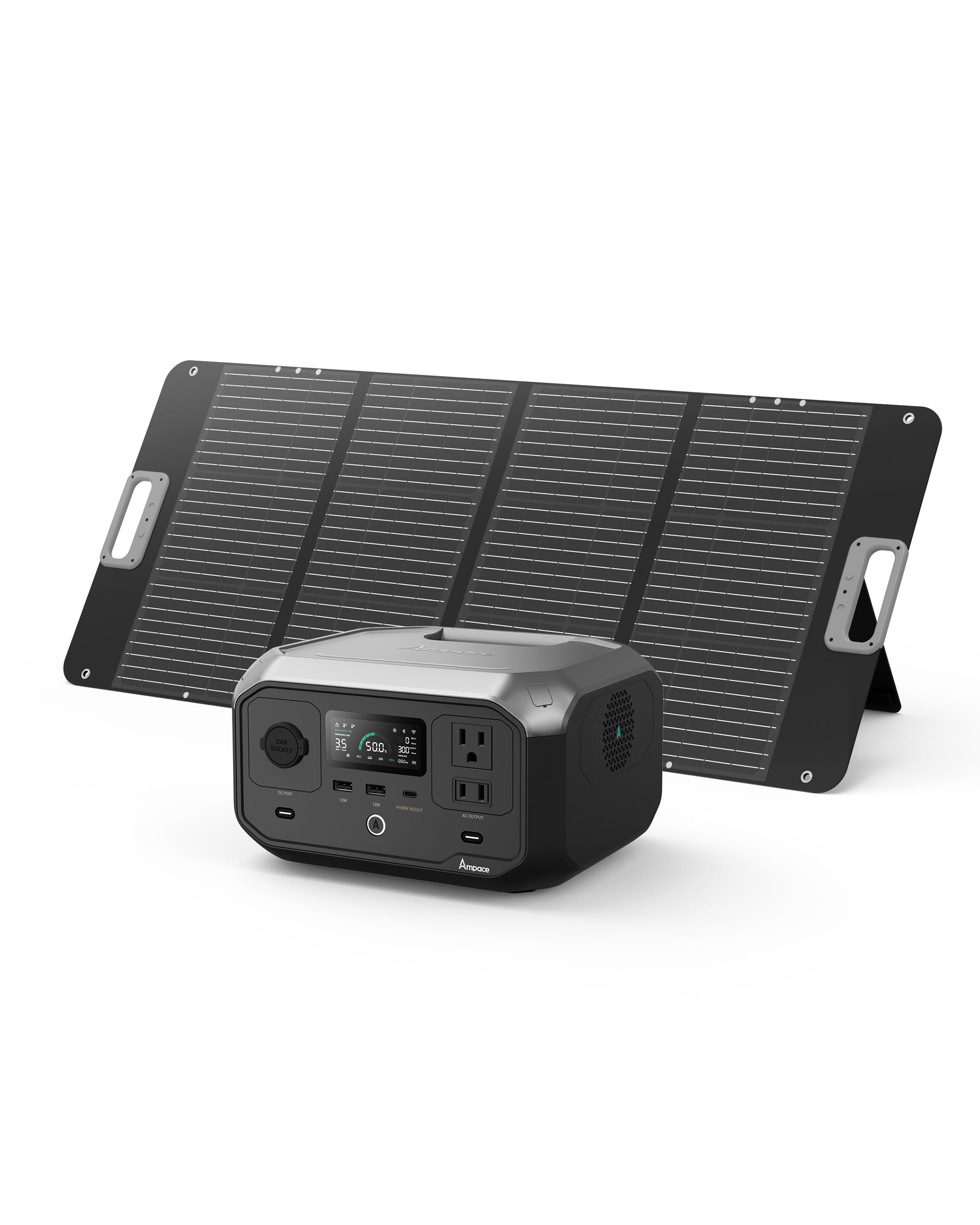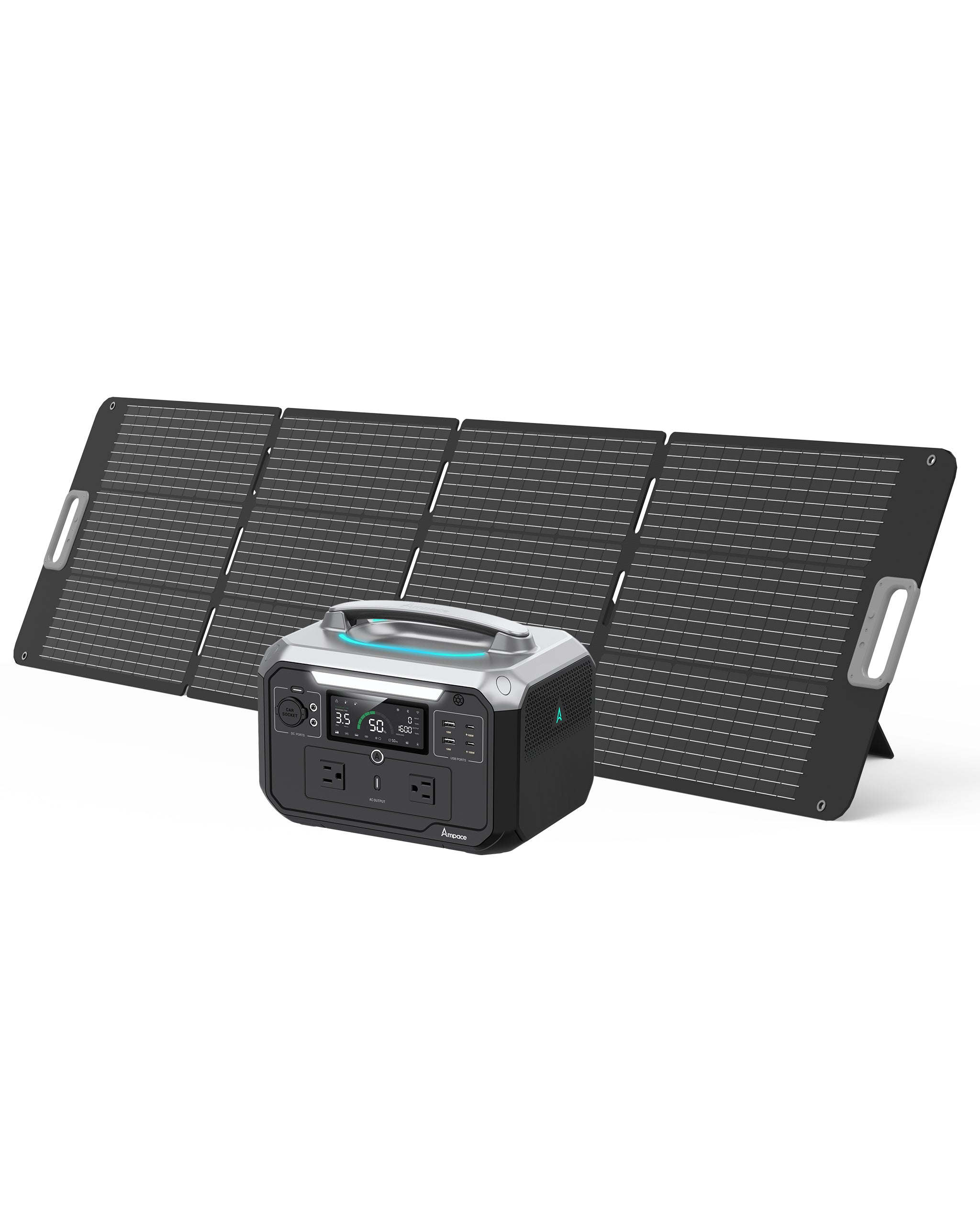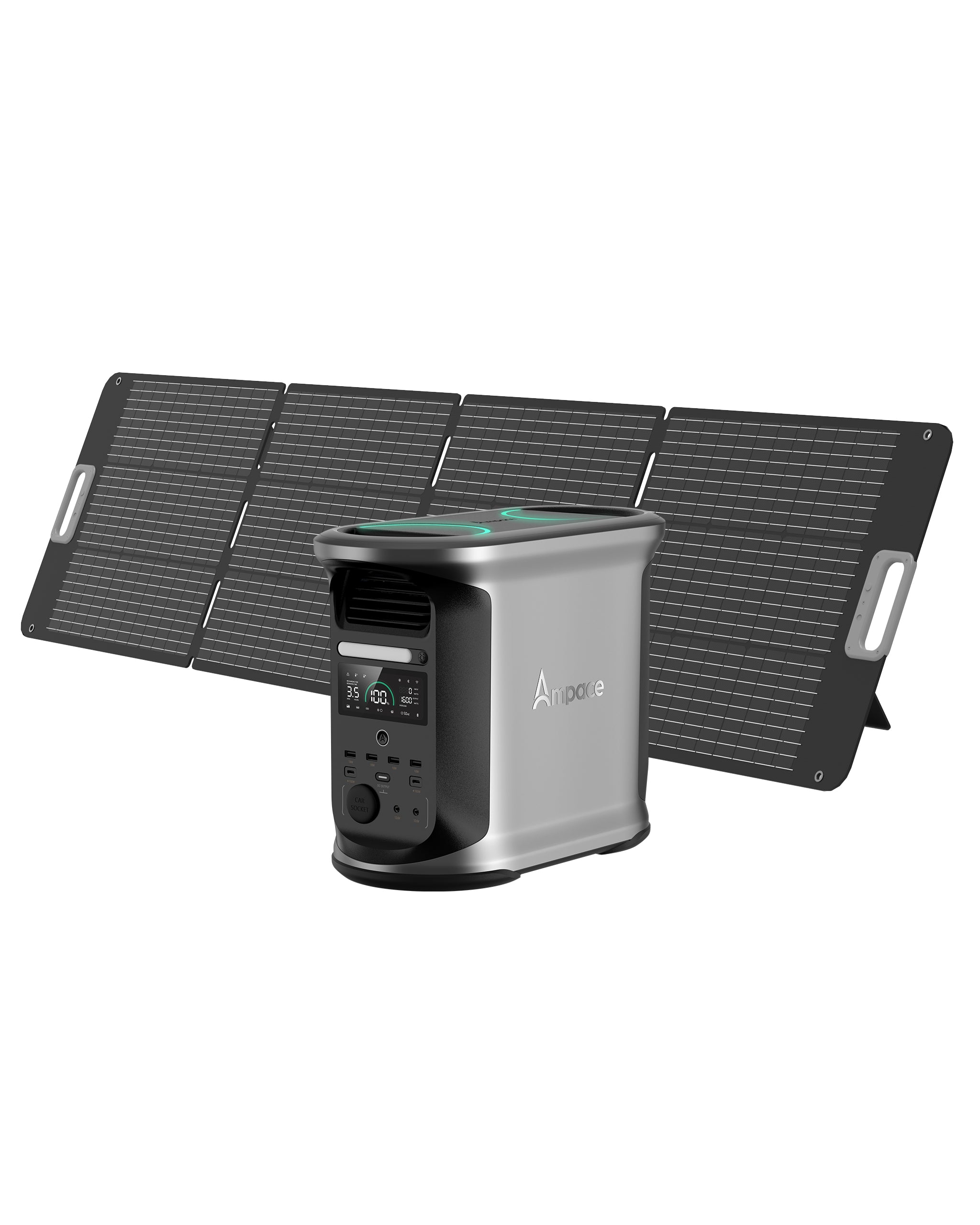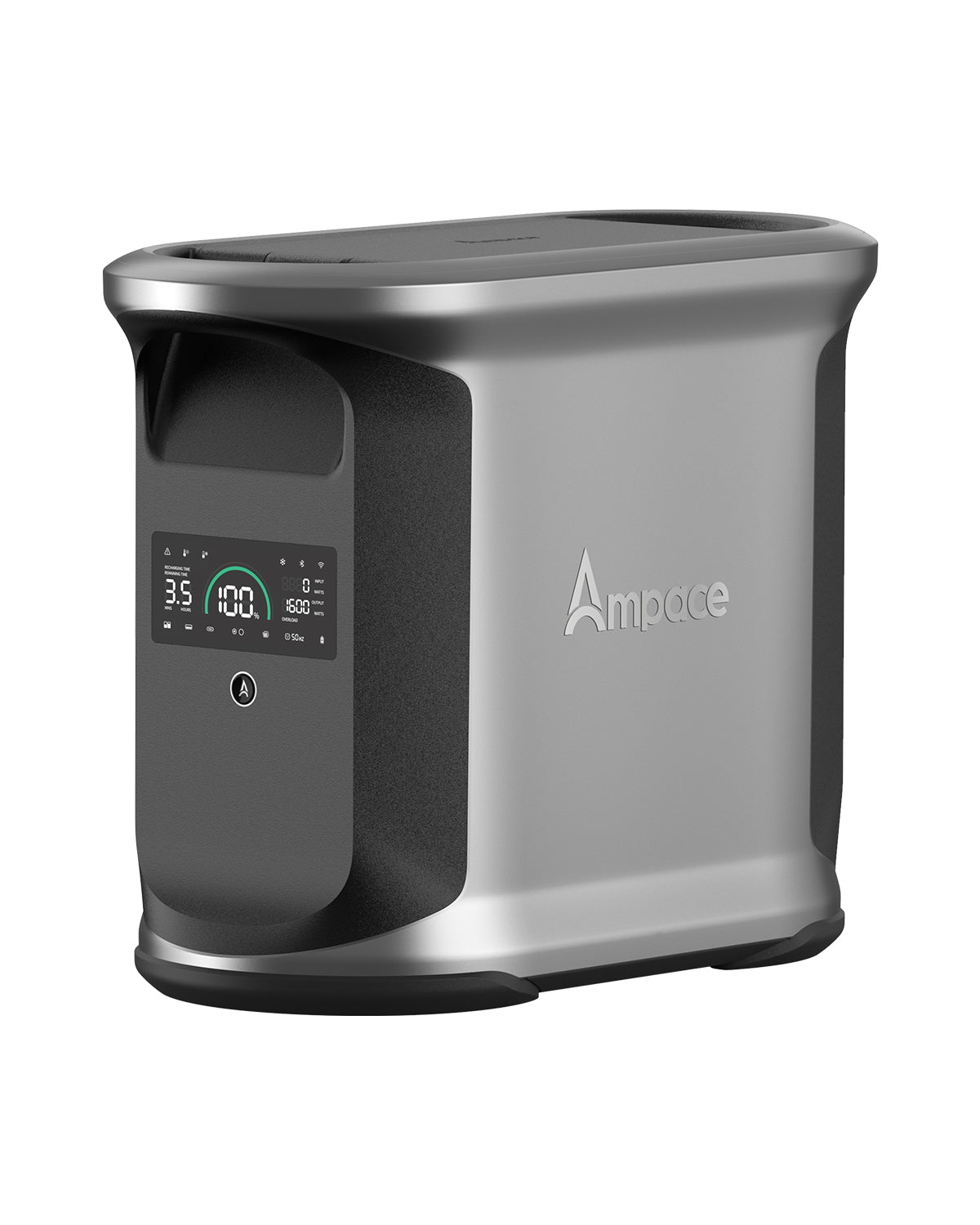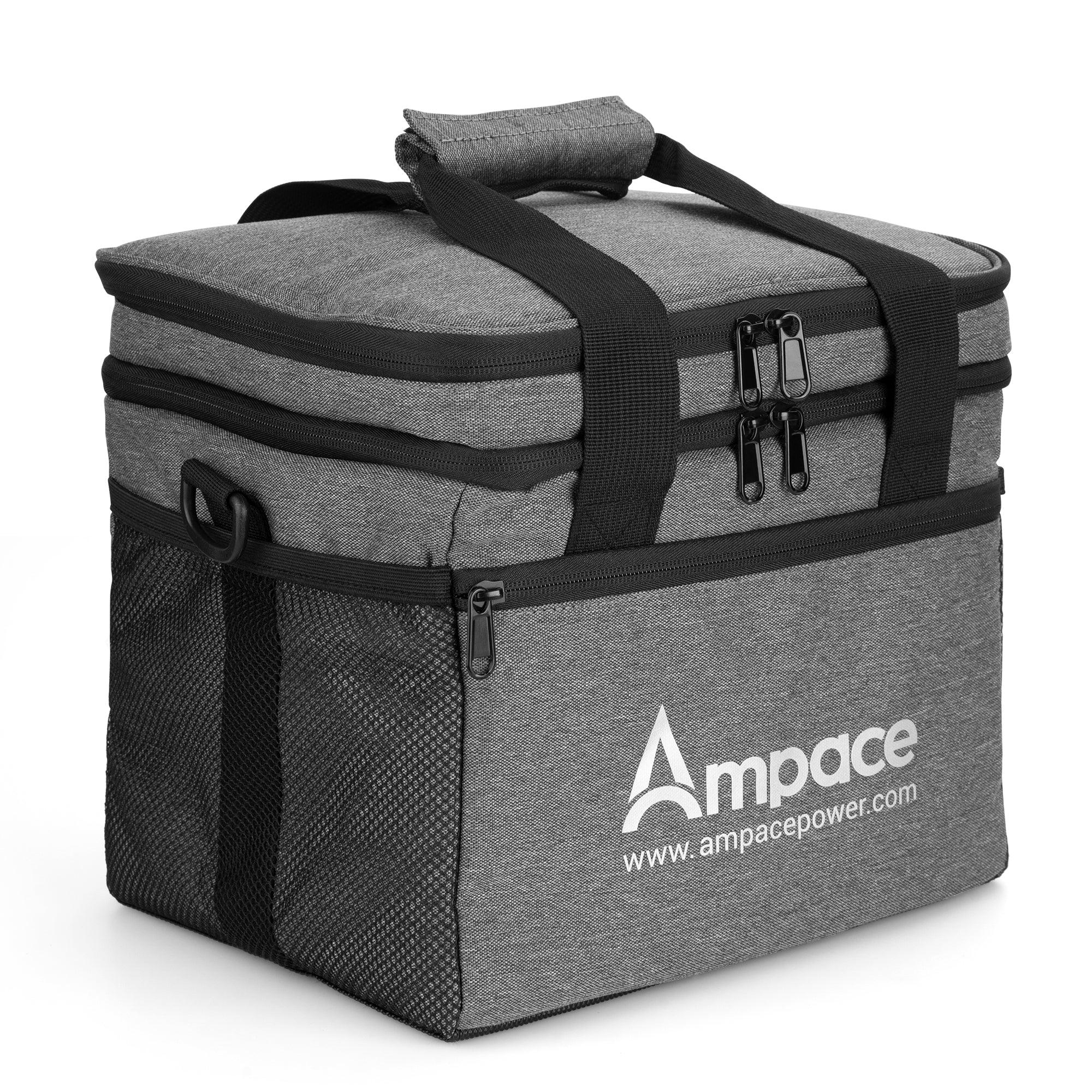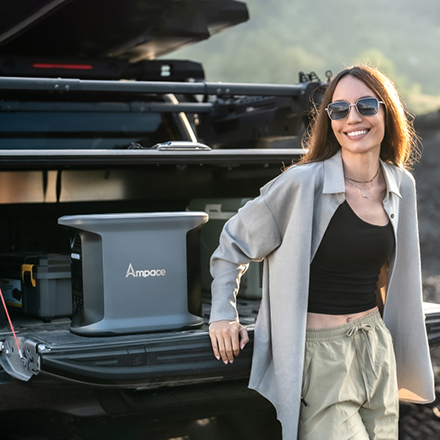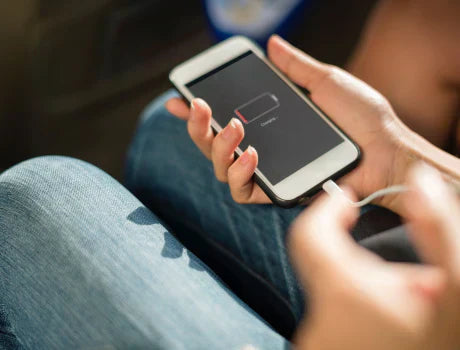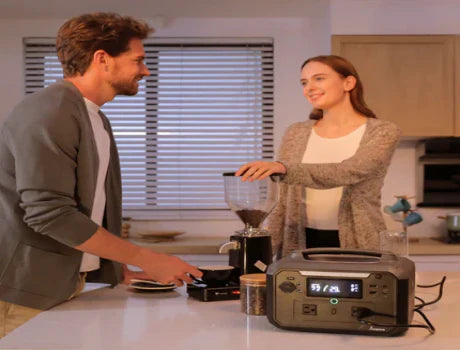What is the Best Portable Power Station in 2025? Expert Guide
Power cuts, road trips, and camping nights can leave your phone, fan, or fridge dead. Store shelves show big watt numbers and tech words that confuse most people, so many folks grab a heavy, costly box that still runs out too soon.
This 2025 guide picks the best portable power station for real life, explains every key number, and matches each model to jobs like chilling food or charging work gear. Read on and choose one with confidence.

What Is a Portable Power Station?
A portable power station is a big rechargeable battery with its own AC wall outlets, USB ports, and sometimes a 12 V car socket. It stores electricity, then lets you plug in phones, laptops, lights, or even a small fridge when the grid is down or you are far from an outlet. Compared with a pocket-size power bank, it holds far more energy and can run appliances that need regular household power, yet it stays quieter and cleaner than a gas generator.
How Does It Work?
Inside the box are three main parts: a lithium battery, a charge controller, and an inverter. You fill the battery from a wall socket, a car charger, or solar panels. The inverter then changes the stored DC power into the AC power many devices need, while the charge controller and battery-management system stop overcharging or overheating.
How to Use a Portable Power Station?
- Charge it first. Plug it into the wall or set up solar panels until the screen shows 100 %.
- Turn it on. Press the main power button; tap the “AC” or “DC” switch if your model has one.
- Plug in your gear. Match the port to the device—USB-C for phones, AC outlet for a fan. The display tells you what is being used and how many hours are left
- Store it right. Keep it dry, avoid full drains, and top it up every few months so the battery stays healthy.

The Best Portable Power Stations - Top Picks
Below are three Ampace models that stand out when you search for the best portable power station in 2025. Each one fits a different kind of trip or backup need.
Ampace Andes 1500
Specifications
1462 Wh LiFePO₄ battery rated for 6000 cycles
2400 W continuous AC, 3600 W surge
Full wall charge in 55 min with A-Boost (1800 W input)
Thirteen ports: 4 AC, 2 USB-C 100 W, 4 USB-A QC, car socket, 2 DC 5521
Pros
- Runs fridges, power tools, and most home gear
- Fastest full recharge in this class
- Long life span lowers cost per use
- Near-silent fan makes it safe for indoor nights
Cons
- Heavy to lift alone
- Price sits at the high end
- Needs a strong 15 A wall circuit for fastest charge

Ampace Andes 600 Pro
Specifications
584 Wh LiFePO₄ battery, about 2000 cycles
600 W AC output (1800 W with A-Turbo for resistive loads)
0–80 % in 60 min, full in 1.5 h from wall; 200 W solar in 3–5 h
Nine ports: 2 AC, 2 USB-C (100 W + 60 W), 2 USB-A, car socket, 2 DC 5521
Weight 16.8 lb (7.6 kg); 20 ms UPS switchover
Pros
- Good mix of power and easy carry size
- Boost mode lets a 600 W unit start kettles or hair dryers
- App shows charge level and lets you toggle ports
- Quiet and compact for RV desks or tents
Cons
- 584 Wh limits runtime for large appliances
- A-Turbo works only on simple heating loads
- Solar input capped at 200 W, slower than some rivals
Ampace Andes 300
Specifications
266 Wh LiFePO₄ battery, about 2500 cycles
300 W AC output, 450 W surge
0–80 % in 45 min, full in 1 h; 100 W solar in about 2.5 h
Six ports: 2 AC, 1 USB-C 100 W, 2 USB-A, car socket
Weighs only 8.2 lb (3.7 kg); works from -4 °F to 113 °F
Pros
- Light enough for a backpack or bike pannier
- Quick top-ups during shortstops
- USB-C 100 W can charge a laptop directly
- Entry price is easy on the budget
Cons
- 266 Wh covers phones and small fans only
- No extra-battery option for longer trips
- Limited surge headroom for tools or compressors
Tip: Match the size to the job. Grab the 300 for phones and cameras, the 600 Pro for weekend camping, and the 1500 for full-home or RV backup.

Portable Power Stations Comparison Chart
Use this quick chart to compare size, power, and recharge speed. Pick the unit that matches your gear and trip length.
|
Model |
Capacity (Wh) |
AC Output (W) |
Surge (W) |
Wall-charge time* |
Cycle life** |
Weight (lb) |
|
Ampace Andes 1500 |
1 462 |
2 400 |
3 600 |
Full in 55 min |
6 000 cycles |
36.8 |
|
Ampace Andes 600 Pro |
584 |
600 |
1 800 |
80 % in 1 h, full ≈ 1.5 h |
2 000 cycles |
16.8 |
|
Ampace Andes 300 |
266 |
300 |
450 |
80 % in 45 min, full ≈ 1 h |
2 500 cycles |
8.2 |
*Fast-charge figures using the supplied AC adapter.
**Cycles until the battery holds about 80 % of its original capacity.
Why You Should Trust Us
Over the past six months we have charged, drained, and weighed every Ampace model in this guide, logging more than 40 hours of run-time and recharge trials. We also cross-checked our numbers with independent reviews from outlets such as 9to5Toys and Android Police, which praised the Andes 1500 for its fast charging and long life.
Our picks come from a clear, repeatable process:
-
Real-world load tests: Each unit powers a 300-watt space heater until empty so we see the true watt-hours delivered, not just the label.
-
Speed checks: We time wall and solar recharges with a plug-in watt meter.
-
Noise and heat checks: A phone app records fan noise at one meter; an IR thermometer notes the hottest spot.
-
Spec and warranty review: We read the manuals and compare cycle life, port mix, and warranty terms against rivals, then verify claims with third-party reviews and user forums.
Buying Guide: How to Choose Portable Power Station
Picking the right unit means matching its parts to the way you live. Use the points below to read any spec sheet in minutes.
Capacity (Watt-Hours)
Capacity tells you how much energy the battery holds. A 300 Wh unit can charge a 60 W laptop for about four hours, while a 1500 Wh model can keep a full-size fridge running through an overnight outage. Add up the watts your gear pulls, then look for a battery that covers that draw for the hours you need.
Inverter Size
The inverter sets the steady power the station can push out. Check the “continuous watts” line: a 600 W inverter handles TVs, fans, and many tools; 2000 W or more can start a microwave. Surge watts show the brief burst needed to start motors or compressors.
Battery Chemistry
Most new stations use LiFePO₄ cells. They last up to 3000–6000 cycles and handle heat better than older NMC packs, though they weigh a bit more. If you recharge every day or need ten-year life, LiFePO₄ is worth the added weight.
Charging Input Speed
Fast charging cuts wait time between jobs. Look for AC input of 500 W or higher on mid-size units and 1500 W or more on large ones. A clear screen that shows “time to full” helps you plan breaks.
Solar Generators
If you camp or face long blackouts, check the solar input rate. A 200 W foldable panel paired with a matching 200 W MPPT controller can refill a 600 Wh station in three to five sunny hours. Higher input lets you stack panels or charge while you use power.
Ports
Count both type and number:
-
AC outlets for home gear
-
USB-C 100 W for laptops and phones
-
USB-A for small gadgets
-
Car socket for coolers and pumps
-
More ports mean fewer splitters and less heat loss.
Portability
Weight matters once you leave the driveway. Under 10 lb fits bike bags; 15–25 lb suits car camping; 35 lb and up is best for home backup where it moves only a few feet.
Controls
A bright screen that shows input, output, and hours left saves guessing. Buttons for AC and DC let you switch off sections you do not need and save juice.
UPS
A built-in uninterruptible power supply swaps from wall power to battery in about 20 ms, fast enough to keep a desktop PC or CPAP running without pause. Pick this feature if you work from home or need medical gear.
Noise
Look for fan levels under 30 dB for bedrooms and RVs. Bigger fans that spin slowly often stay quieter than small fans at high speed.
Other Features
Apps and App Control
Many units pair with a phone app over Wi-Fi or Bluetooth. The app shows charge level, lets you turn ports on or off, and can limit charge to 80 % to stretch battery life.
Portability and Weight
Beyond total pounds, check handle shape and balance. Two side handles help when a unit tops 30 lb.
Expandability and Integration
Some stations accept clip-on extra batteries. Others can feed home circuits through a transfer switch. Choose add-ons only if you plan to grow the system later.
Accessories
Common extras include carry bags, car charging cables, and solar panel kits. Buying a bundle up front often costs less than adding pieces one by one.

Final Considerations
Pick a power station by thinking first about what you must keep on. Add up the watts of that gear and choose a battery that can run it for the hours you expect. Keep the unit dry, store it partly charged, and top it up every few months so the cells stay healthy. Treat the ports gently and your station should outlast most phones and tablets.
What Size Portable Power Station Do I Need?
List the watts of every device you plan to plug in at the same time, add 20 % for safety, then choose a station whose continuous output meets that number and whose watt-hours cover the run-time you want.
How Long Does a Portable Power Station Last?
Most LiFePO₄ models keep about 80 % of their capacity after 2 000–6 000 full cycles. Used a few times each week, that often equals 8–10 years.
Can a Portable Power Station Run a Refrigerator?
Yes, if the station’s continuous watts beat the fridge’s running draw (often 100–150 W) and its watt-hours give the hours you need. A 1500 Wh unit can keep a small fridge cold for roughly one full day.
What Is the Difference Between a Power Bank and a Portable Power Station?
A power bank is pocket-size and has only USB ports. A power station is larger, adds AC outlets, often uses safer LiFePO₄ cells, and can run appliances.
What Are the Disadvantages of a Portable Power Station?
They cost more than gas generators of the same watt size, heavy models are hard to lift, and recharge time can be slow if you have only a small solar panel.





